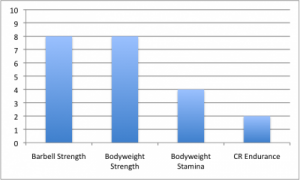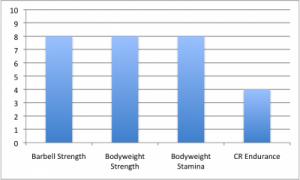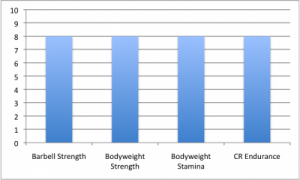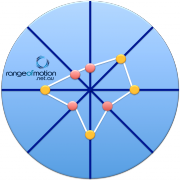In my opinion, there is no way to be a good CrossFitter without consistent and long term weakness biasing.
‘CrossFitness’ is largely dependant on two things; the magnitude of fitness and the balance of its components. Balance without magnitude delivers a mid-tier CrossFitter at best, while magnitude without balance does not even deliver a CrossFitter – just a masquerading specialist, events away from exposure.
And yet, flocks of CrossFit athletes around the world follow the masses into whatever program bias is in vogue. There is simply too much individual athlete variance for blanket programming to work.
In 2012 everyone was snatching. In 2013 everyone is high bar back squatting. Now, I see no problem with this, if your weakness in 2012 was snatching and your 2013 weakness is your squat. But I see plenty of problems with this if your weakness is running, handstand push-ups, double-unders, muscle-ups, ring dips, overhead strength, swimming, ankle mobility, rowing, anything over 5 minutes, any lifting movement without a perfectly balanced a knurled barbell, rope climbs, pistols, shoulder mobility or any one of countless other variations of movement.
There is no doubting that a periodised program for a known peak is a necessity for a competition CrossFitter. The overall concept is that of ‘accumulation’. You begin by biasing towards one element of fitness (eg: strength), then retain that as you build another on top of it, then retain that as you build another on top of it. The key is in keeping the stimulus high enough in the ‘already biased towards components of fitness’ to retain the improvement you gained in them while you bias towards something else. Whenever you bias away from a focus (ie: less heavy powerlifts), the program that replaces them must be sufficient to maintain the gains made by the biasing. Preservation of previously established physical abilities even after they are no longer biased towards.
Certain physical components admittedly take longer to develop than others. Absolute strength takes longer than bodyweight ability, which takes longer than cardiorespiratory endurance. The intended outcomes of four phases of segmented and periodised training focus can be expressed as follows.








But this neat model of athletic development takes into account only the already balanced athlete. The model is theoretical only. Practically speaking, the model fails to maximise athletic performance when the subject is not already balanced. A 200kg+ back squatter whose worst CrossFit Open placing falls in the muscle-up workout every year can direct their focus more intelligently than at a Smolov cycle… no matter how much they enjoy squatting.
A more practical model of development would require a bias towards weakness regardless of the phase of training.
There is no ‘one size fits all’ approach to health and fitness, and programming should mirror this.
Every exercise, time domain or workout represents a different spoke on a wagon wheel. Invariably, as we progress through our exercise life, the wheel turns – and the spokes are tested. A 5km time trial tests a cardiorespiratory endurance spoke. Olympic Lifting tests a power spoke. Handstand push-ups and pull-ups test relative strength. Snatches and muscle-ups test skill spokes. Limitless components and scenarios exist. These spokes may not be tested every day, every month, or even every year. But they will be tested. You cannot predict when, where or how. Regardless of the strength of the other measures, if an individual spoke fails, the wheel will cease to turn.




 And here lies the basis of programming. We identify deficiencies. We bring these deficiencies up to par with the individual’s strengths. This creates a balanced athlete. Once we have a balanced athlete, we remove any long term bias (though may introduce shortened periods of temporary bias) and improve the athlete as a whole.
And here lies the basis of programming. We identify deficiencies. We bring these deficiencies up to par with the individual’s strengths. This creates a balanced athlete. Once we have a balanced athlete, we remove any long term bias (though may introduce shortened periods of temporary bias) and improve the athlete as a whole.
CrossFitters need to stop following the crowd. Athletes need to aggressively and individually attack their own deficiencies, not those of the group.
The programming software, My Fitness File encapsulates these philosophies in their entirety.
Maybe we just need to give more programs Russian names and people will start biasing to their own weaknesses, not those of the masses.





